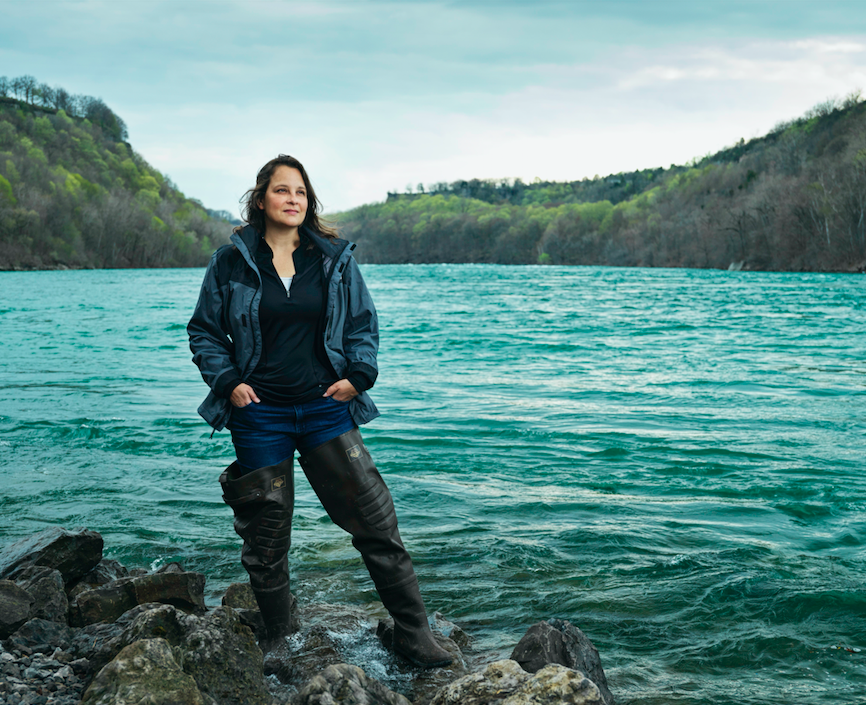For decades, untreated sewage flowed directly into Hann Bay, a body of water off Senegal’s western tip. Oil companies released toxic sludge into the bay and meat companies dumped wastewater. Regulations that would have shielded the Hann Bay from this sort of pollution were either unenforced or not on the books.
By the turn of the century, once-thriving fishing communities were no longer able to rely on the bay for a steady income. Fish populations declined in areas close to the shore and waterborne diseases began to spread more rapidly, making trips out onto the water dangerous.
Mbacke Seck was on a local football team at the peak of the bay’s degradation. He spent his free time campaigning to fix community problems such as access to health care and realized that no progress would be made on any issue unless Hann Bay was cleaned up.
So he joined the Waterkeeper Alliance, an international coalition of activists fighting to protect the world’s water supplies, and began organizing concerned citizens beginning in 2005. His advocacy eventually helped to secure a $68 million commitment from the Senegalese government, the French Development Agency, and the European Investment Bank to clean up the bay.
While the Hann Bay isn’t back to its pristine, former state, it’s in much better shape today. Now, people can once again fish and swim in the water, a testament to the power of community action and the remarkable regenerative capacity of nature when given a chance to recover.
Seck’s actions have been emulated hundreds, if not thousands, of times by everyday people in different contexts — people who want to ensure their families and neighbors have clean water to drink.
In Peru, the waterkeeper Rodrigo de la O fought the construction of a new coal plant to protect his community’s drinking water.
In the Bahamas, Rashema Ingraham is a waterkeeper working to develop laws to regulate pollution from sewage systems and the tourism industry.
Sharif Jamil is known as the Buriganga Riverkeeper in Bangladesh because he forcefully resists industrial activity from harming water sources.
These men and women prevent and reverse the widespread degradation and misuse of precious bodies of water all around the world. Their stories were recently told in an exhibit at New York’s annual Photoville pop-up event.



Their efforts have never been more urgent, according to Marc Yaggi, executive director of the Waterkeeper Alliance, which boasts 346 chapters around the world.
“The challenges are rapidly escalating,” he told Global Citizen. “It’s a matter of water quantity and quality.”
The United Nations warns that up to 5.7 billion people could experience water scarcity by 2050. Already, more than 2 billion people don’t have access to reliable clean water, and more than 4 billion experience water scarcity at least one month out of the year.
Water is becoming scarce for a few reasons, but it often boils down to a lack of serious regulation. Industries, especially agriculture, are severely overexploiting water resources because of outdated or nonexistent government guidelines. For example, the Colorado River, which supplies water to numerous US states, is at risk of running dry because farms divert so much of its water for irrigation.
Then there’s pollution. More than 2 billion tons of industrial waste and sewage are dumped into bodies of water annually because of weak regulatory systems, Yaggi said. An estimated 80% to 90% of water sources throughout Asia and the Pacific region are contaminated with sewage or chemicals, the UN notes.
Water pollution is a matter of life or death. Globally, “half of the world’s hospital beds are filled with people with waterborne illnesses,” Yaggi added, and millions of people, especially children under the age of 5, die from water-related diseases each year.
“Hovering over all of this is the climate crisis,” Yaggi said. “Climate change is a water issue. When you talk about climate change you can’t help but talk about water, whether it’s the drought or excessive flooding that’s forcing people to migrate from the countryside to urban centers. Or the ocean acidification that’s destroying the shellfish industry. Or Louisiana, where they’re moving names off the map because those places don’t exist anymore because of sea level rise.”
The Waterkeeper Alliance is a bulwark, formed from hundreds of staunchly devoted community activists, against these grim trends. Whenever a local chapter opens up, activists begin informing people about their rights and making the stakes of inaction clear. Their efforts tend to pay off — community groups spring up, concerned about their welfare, ready to hold companies and governments accountable.
Their work isn't all forward progress. They often face intimidation tactics, outright suppression and violence, and exclusion from the halls of power.
But if Seck's story is any indication, then the right to clean water can be championed and secured for people in all contexts.